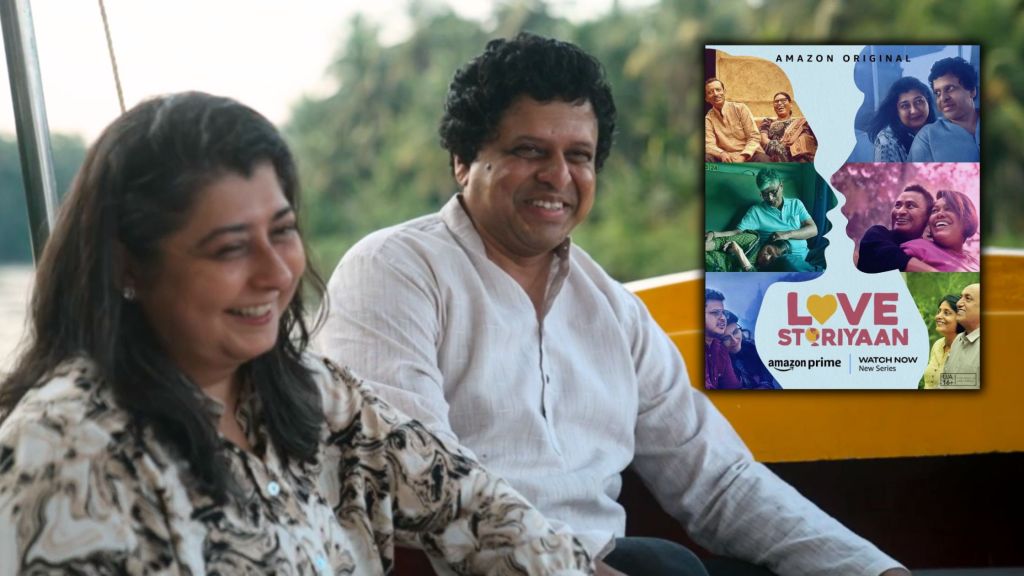Format: Documentary
Directors: Deepti Kakkar, Farhad Mustafa
Deepti Kakkar and Farhad Mustafa’s stellar documentary Katiyabaaz is a must-watch. Too bad no one’s watching.
It is deeply telling of a well-done docu-drama set in small-town India beset by power shortage that our movie hall of 140 persons was absolutely empty – besides my husband and I, there was just one other middle-aged couple. It was almost like a private viewing.
But it is Delhi’s loss if it doesn’t want to know about this ‘other’ India, take heed from the lessons that abound there, or simply admire a work of cinematic art.
The award-winning documentary made last year and released in Indian cinemas last week zeroes in on Kanpur’s infamous electricity failings. There isn’t enough power output. People resort to bribing electricity board employees to help them steal electricity using katiyas (wires), or hiring professionals like Loha Singh (the katiyabaaz) to wire ‘em up. There is an overload on the existing, weak infrastructure, which crashes further. The electricity board gets a new chief who goes on a drive to recover money from a frustrated consumer base. She cuts off supply or imposes fines. No one can afford to pay it. Outage hours go on for most parts of the day. People take to the streets; there’s violence, exasperation, fear, mayhem and, yes, misogyny and politics.
Deftly balancing both points of view – the defiant, penurious Robin Hood-esque katiyabaaz and the defiant, no-nonsense MD of the ill-fated Kanpur Electricity Board (KESCO) – directors Deepti Kakkar and Farhad Mustafa manage to stay objective despite presenting a highly contentious debate. Three ideas ensue.
THE NOTION OF JUSTIFIABLE THEFT
When is it alright to steal? If your elected government or municipal body isn’t doing a great job of supplying power, how do you survive in the sordid 47-degree Celsius summer heat? How do you pump water up to the tank and run offices and factories that need reliable source of electricity? Citizens have their own side of the story – on why this kambakht KESCO has made thieves out of them.
But KESCO’s MD, IAS officer Ritu Maheshwari has her own take: “If people don’t pay up, how do we update the infrastructure? We’re in losses of Rs 2,000 crore, mostly due to unpaid bills and power theft. When people steal from already overloaded lines, they further damage the existing machinery; who will pay? How much can the government subsidize?”
Her solution – which ruffles quite a few feathers although she terms it ‘soft’ – is to fine thieves, cut off power supply to the defaulters and clean up the act within the organization. Unfortunately, she only manages to alienate everyone, within KESCO and outside, the ordinary citizen, sweating under a harsh sun, now staggering under a hefty fine as well. She’s transferred a year later, of course.
The hapless common man’s point of view is presented eloquently through the irrepressible Loha Singh, who minces no words, mostly foul, about the government’s inefficiency, corruption and profit motive: “KESCO teaches us to steal; then it punishes us for it.”
THREE INDIAS
To a multiplex audience in south Delhi, these narrow lanes of Kanpur, these filthy factories and troubled brows, represent another country altogether. Here then, we the people realize that the country we live in isn’t just about the city versus the village but there’s another huge set of people in the picture as well. We’re now divided into urban India, rural India and rurban India, this last a large populace with the mindsets of the countryside, the aspirations of a small town and all the amenities of an urban slum. How can these places be called towns or cities when they have no electricity 16 hours a day, one wonders. When their workplaces look like garbage dumps, where the government machinery splutters obsolete, and where streets are a web of wires. Oh wait, that’s what most of India outside the highways of the capital looks like.
Admittedly, the worst quarters of Kanpur are comparable with the most commonplace in other Indian cities, and definitely in Uttar Pradesh. With a 220V bolt of irony, one realizes this is a state that has – over the past two decades or so – had a socialist (Samajwadi Party) and a champion of the Dalits (Bahujan Samaj Party) party in power – all in the name of empowering the poor. SP leader Mulayam Singh Yadav – he of the rapist-forgiving tendencies – has built a south Delhi of sorts in his home turf of Saifai (it has opulent roads and its own airport, perfect for Bollywood stars to fly down to perform at the village’s annual festival). Lady Mayawati of BSP chose to spend millions of poor UP-ites’ tax moolah in absurd gestures such as erecting statues of social reformers (“Uh-uh,” you visualize Ambedkar reprove, shaking his head) in NOIDA, endangering wildlife of all species, including human.
In fact, all political parties may as well plead guilty to the charge of apathy – the most populous state in India is also the most neglected when it comes to basic needs and rights. Katiyabaaz admirably captures this fickle political behavior: glimpses of Rahul Gandhi and former PM Manmohan Singh visiting Kanpur doling out promises highlight the people’s no-option election options. Showing off burn scars on his hands from years of manipulating high-voltage power cords, Loha Singh puts it succinctly: “These ***** only visit when there is an election.”
Suddenly, the air-conditioned cinema hall working to full capacity for an audience of four takes on the appearance of a cruel joke.
THE ‘FILMI’ DOCUMENTARY
Not only have Kakkar and Mustafa done a remarkable job in following the lead characters and the city of Kanpur over a couple of years, they’ve also managed to inject all the important ingredients of a Bollywood-style film into it. Loha Singh is introduced with a dashing background score. A catchy lead song plays through key moments in the film. There is comedy, violence, tears, cops-versus-robbers action. With clever editing and a swift pace, the film demonstrates the words of American journalist Hunter S Thomson: “Truth is weirder than any fiction I’ve seen.”
The format is ideally suited for an audience that loves a little bit of masala in its movies, and it can be a powerful tool in spreading a message we all need to hear about electricity or just about anything else to do with civil rights and duties: We’re all in this together.
But oh wait. There’s just four of us listening.
First published on TheNewsMinute.com









Leave a comment